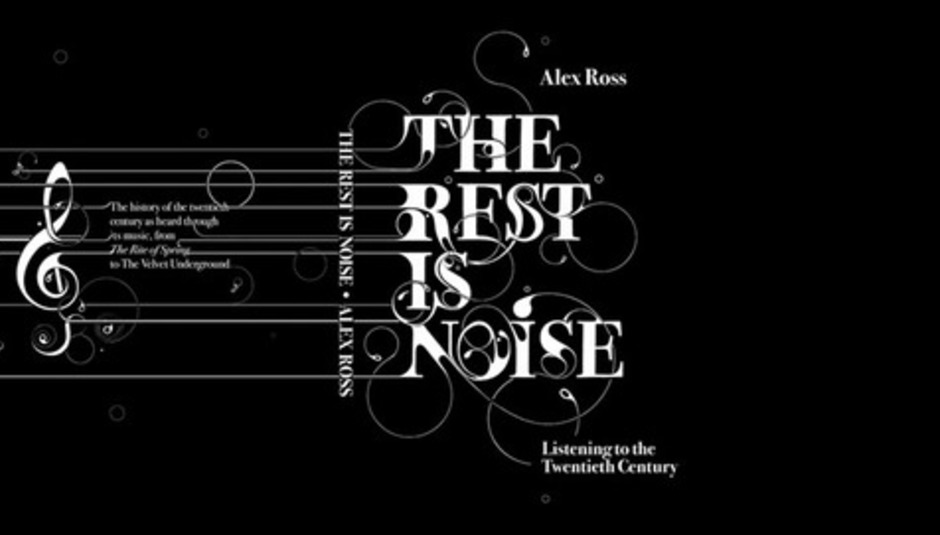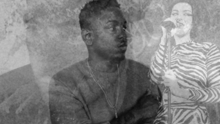You know that metaphor in which the lifespan of the Earth is a 12-hour clock, and multi-cellular life appears at 6 minutes to midnight, and hominids appear some time in the last second? (Don’t quote me on that.) Point is: Western “Classical” music has been around for several hundred years; something equally broad, called “Minimalism”, has been around since the mid-20th century, and it was only at the end of the 1960s that its experiments started feeding into what was by then “popular” music (the likes of Strauss and Mahler no longer being celebrities). For instance, John Cale actually enters the narrative on page 508, and the epilogue at page 542 slips in references to Bjork, Joanna Newsom, Sufjan Stevens, and Nico Muhly (best known to DiS readers as Antony Hegarty’s recent collaborator, and Will Oldham’s, for The Letting Go).
In other words, DiS readers might want to focus on the last 80 pages of The Rest Is Noise, which explores Minimalism (as Classicists refer to it), and basically sees instrument-builder Harry Partsch invent Tom Waits; gamelan-enthusiast Henry Cowell [sic] invent Timbaland; John Cage & Terry Riley invent post-rock; Steve Reich & Phillip Glass invent electronica and most sequencer-based music that isn’t 19th century barrelhouse music played on synths. Okay, that’s hyperbole, but they set plenty of balls rolling.
Instruments, machines, and recording techniques aside, it hadn’t occurred to many pre-20th century composers to employ particular combinations of dissonance and consonance – this may be what YOU, personally, don’t like about “classical music”. In fact, there were vast and imaginatively ossified institutions opposed to certain effects, aligning them with devilry and social disorder. If this metanarrative (the birth of the twentieth century as the Death of God) sounds overfamiliar and tired to anyone with a smattering of literary theory, art theory, philosophy, or modern history – so it should; reactionary and hysterical though it may now seem, this sense of cultural rupture largely came from the domain of music, where you could literally feel it. As Ross points out, levels of dissonance did rise quantitatively in the twentieth century, as did atonality. Whereas “Wagner, Strauss, and Mahler all counterbalanced their novel sonorities with massive statements of common chords; dissonance and consonance existed in mutually reinforcing tension. Debussy, likewise, populated his foggy harmonic terrain with quaint melodic characters. […] Schoenberg was the one who insisted there was no going back.” (p. 58). That doesn’t necessarily mean it’s all worth exploring, but the interpenetration of Cultural Values, Historical Development, and Musical Innovations is so far-reaching, and its drama so well captured, you can empathize with the pioneers who led up to the composers you prefer (personally, Gorecki & Penderecki, who come in on page 459), as well as giving a name to what grabs you in (say) Aphex Twin that isn’t actually an old trick.
One of the deeply satisfying things about this book – for the passive reader – is that it’s possible to follow the various arguments based on quantitative evidence of changing tastes (e.g. of more or less consonant / dissonant music composed across the twentieth century, as well as the actual performance of more or less traditional / old / canonical music by repertory orchestras to a progressively less discerning market, nonetheless thinking itself better than the masses). Furthermore, the physiology of sound-reception in the ear and brain was well understood in the late-nineteenth century, and musicologists have happily described the perceptual effects of relationships between notes since Sumerian times, so we can disentangle subjective evaluations of how music confronts listeners in a particular age and culture from their immediate experience of it. More satisfying still – for an active reader – you can engage with, and generally agree with the argument Ross puts forward, as he plays off the various national or religious traditions, schools, cults of personality, and individual theorists who have aligned “their” values with social revolution, an attack on the current order, a plea for liberation, and (most resonant now?) claimed to be making “the Devil’s Music”. Ross is an enthusiast for the most part, but he’s pithy in his condemnation of “mystical mumbo-jumbo” or anything that just sounds like bullshit. Was Wagner the most important human since Christ? Adolf Hitler and James Joyce thought so, but it’s intriguing to see why, rather than just mock.
As a reading experience, this is a pleasure. It’s good to see that Ross keeps his sketches of living composers, or the biographical circumstances of dead ones, down to the spare and relevant, never falling into the habit of facile biographers that is: mapping every last crease and cigarette-burn, as if we can get closer to the subject that way, rather than focusing on the difficult balancing act between necessary jargon, and precise (but never indulgent) descriptions of the “bright” major chords, or “unnerving” diminished chords.
Granted, it’s a hefty and pricey beast for many newcomers to Classical music, especially if they’re going to stall (in their listening) at the mid-century, even with the best will in the world, and even with Spotify switched on permanently (I have yet to find a composer cited whose works aren't available there). This may seem like an odd venue for a review of this book, then; in a sense, this is as much a review as a plea to the publishers to make an 80-page extract available in some other format (like the 33-and-a-third series...?), so as to make this even more accessible for listeners, journalists, and songwriters who consider themselves entirely apart from "Classical". Meanwhile, a plea to Ross himself to expand on his critiques of contemporary musicians he generally lumps together as “Popular” – it’s good to know that Radiohead distinguish themselves with “opulent harmonics”, but there’s still a gap in the market for a book like Ian MacDonald’s Revolution in the Head, which confined itself to the musical innovations of The Beatles.























